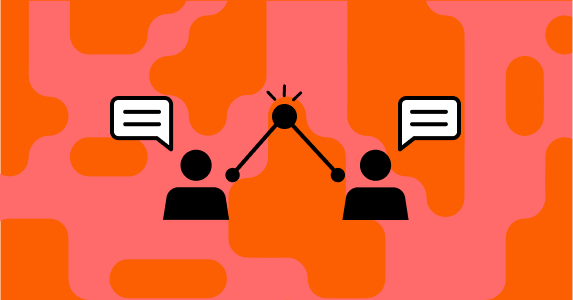An average mobile user today receives over 46 push notifications in a day. To stand out, your notifications must be highly:
- Personalized
- Relevant
- Contextual
Without these elements, your chances of connecting with and converting users are slim. This is especially true for travelers whose context is constantly changing.
The travel industry is vast and dynamic, and it requires a quick and reliable way to communicate with travelers. Push notifications are an ideal medium for keeping travelers informed, engaged, and satisfied by delivering timely and relevant information directly to their devices.
In this blog, we will cover important push notification tips for the travel industry, along with examples and best practices. Hopefully, these tips will inspire you to utilize them in your campaigns and help you harness the true potential push notifications can offer.
8 Push Notification Tips for the Travel Industry
The perfect push notifications are a blend of content, context, and timing. To get them right, here are some tips to follow at every stage of the customer journey to maximize engagement and conversions:
Onboarding Campaigns
a. Ensure Your Customers Opt-in to Receive Notifications
To maximize your travel app’s value, engage with your customers from the get-go. This means, first, ensuring your customers opt-in to receive push notifications. With the latest updates on iOS and Android push notification opt-in, users must first consent to receive notifications from the app provider.
As an app developer or marketer, you have only one opportunity to get users to opt in. Hence, timing the opt-in message is crucial. The best time to send this request is during onboarding when users register on your app. Sending the message right after opening the app or a few hours after registering can be counterintuitive.
Pro tip: Instead of just sending a generic opt-in message request, informing users about what they can expect through push notifications improves the chances of opting in.
For example, instead of sending, “Do you wish to receive push notifications from XYZ travel app?”, consider sending, “By opting-in to receive notifications, you can get updates on the latest discounts, offers and launches on flights, trains, buses, hotels and more.” Adding context to your message significantly improves the odds of opting in.
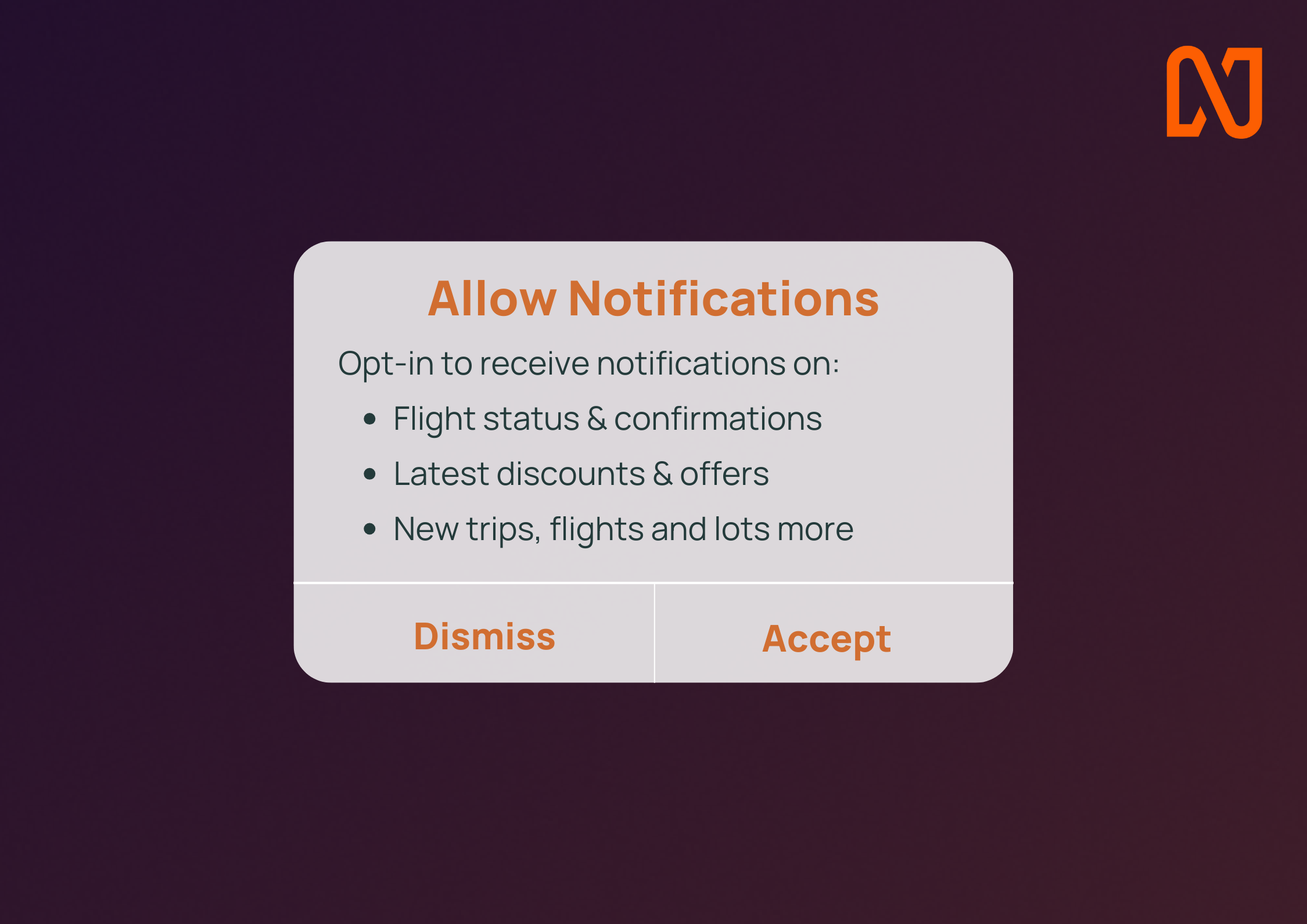
Add context to your message to maximize opt-ins
b. Give a detailed walkthrough of the app
Once users have opted to receive your push notifications, engaging them as early as possible is important. Presenting them with relevant messages related to their search is a good start. Target them with contextual content that matches their preferences.
For example, if customers have looked up flights to London, sending them push notifications about special flight deals or new timings pertinent to their search can encourage them to interact more with your travel app.
Once users open your app, guiding them from selecting flights to finalizing their travel bookings is crucial for creating a positive impression. Pandooin, an Indonesian travel management company, leveraged nudge features like tooltips or beacons to provide a comprehensive walkthrough of the booking process. This approach enhances the app experience and leaves a lasting impression, making the journey memorable and user-friendly.
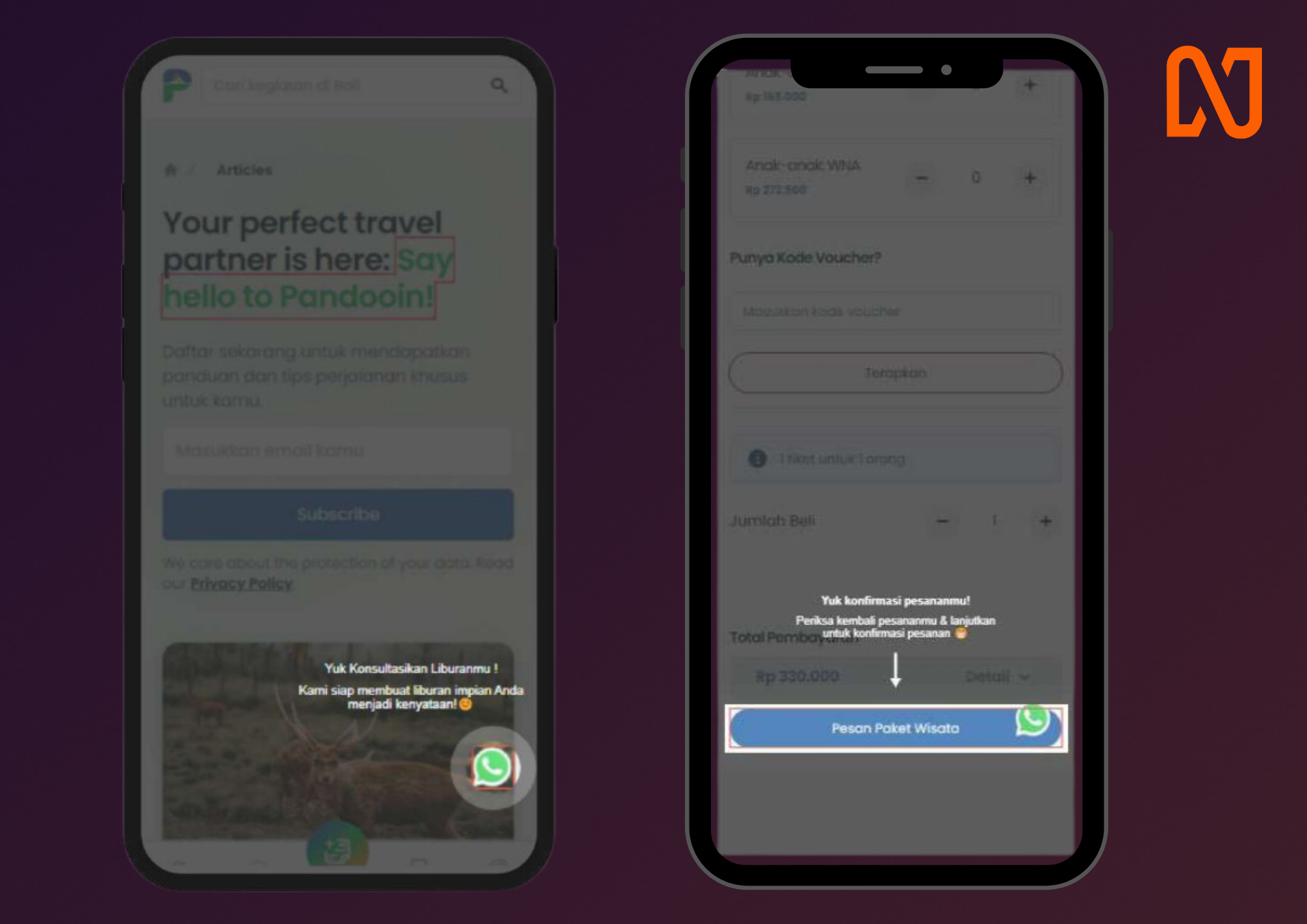
Example of tooltips to provide a superior app experience
Nurture Campaigns
The journey doesn’t end when a customer books a trip through your app. Continuing to engage with them is vital for sustaining a positive customer experience, ensuring they feel supported and connected beyond the initial transaction.
a. Send regular flight updates and schedules
Send personalized push notifications about flight updates and schedules in real-time to travelers, reducing any potential miscommunication or travel-related stress. For example, you can send updates about changes in flight timings or remind users who have not booked any in-flight meal or transportation arrangements.
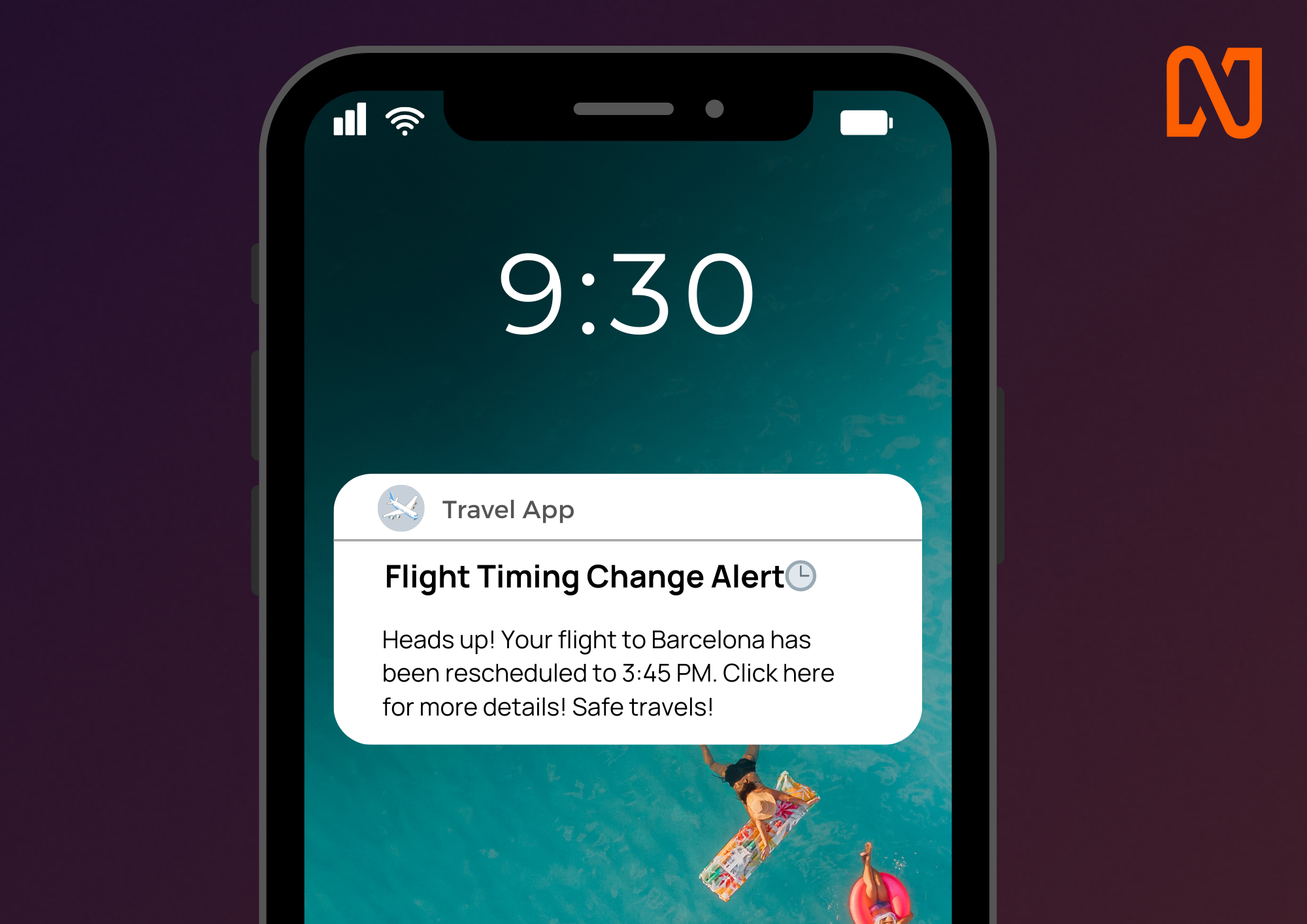
Share real-time updates on flight timings, status and more
b. Send discounts and special offers
For users still on the fence about booking their travel dates, informing them about regular discounts and offers is a great way to keep them engaged with your app. Sending regular discounts and offers on flight and hotel bookings, especially during the festive or holiday seasons, can work wonders for your travel app.
Pro tip: Use rich media in your push notifications to make the offer more attractive. Incorporate images of destinations or consider adding a countdown timer with a deadline to your notifications to create a sense of urgency.
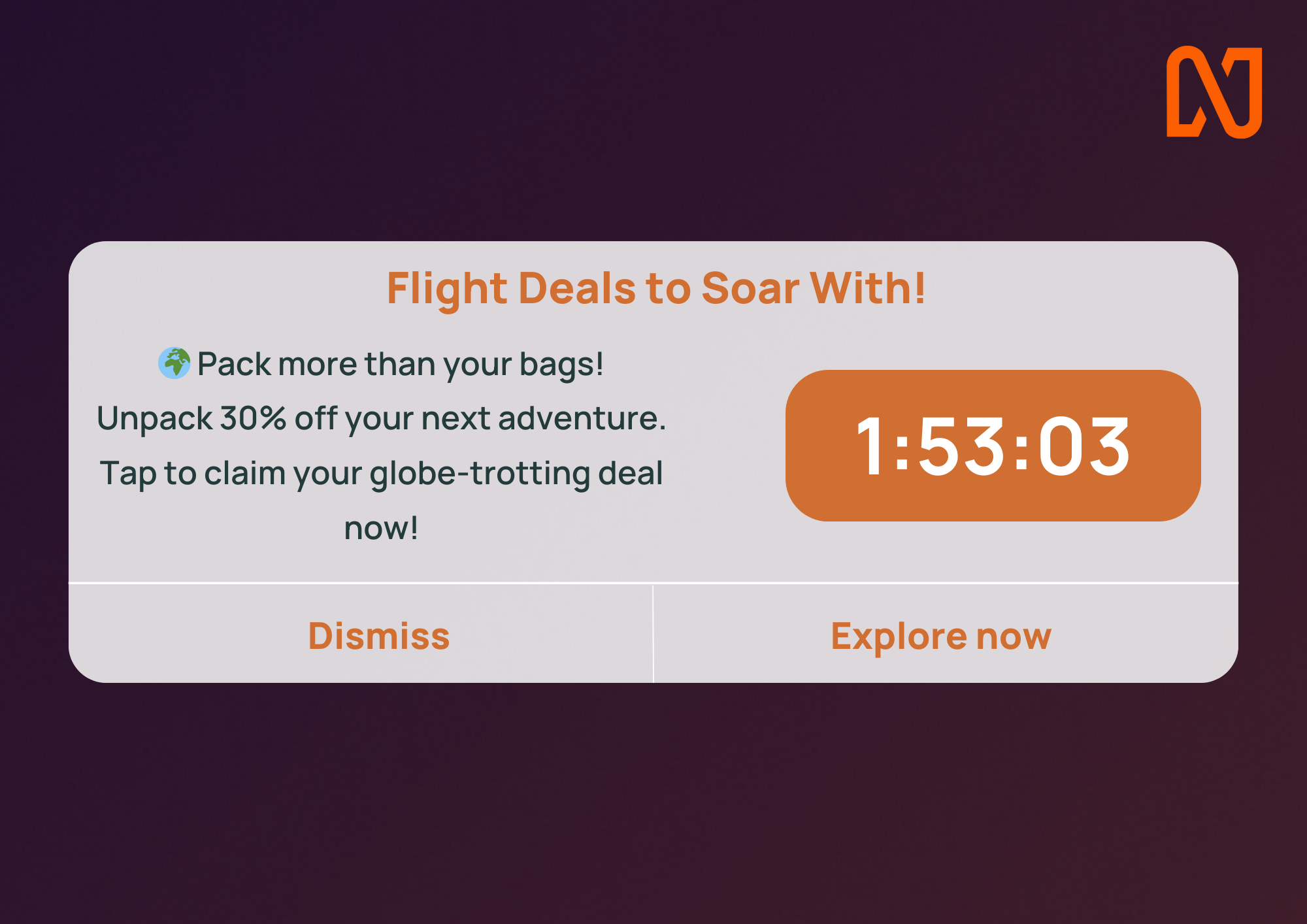
An example of a timer-based push notification
c. Prevent abandonment by prompting users to complete the booking
Users dropping off midway while booking their travel dates can be a frustrating experience for a marketer. This breaks the journey, leaving a disjointed experience, and users may forget their booking process if they’re not prompted to return.
Sending timely push notifications to remind users of their ongoing bookings is a great tactic to get them to return. With a customer engagement platform, you can set up conditions and journeys to trigger a message at any given time.
For example, if a user leaves the app while booking flight tickets, you can set up an automated push notification to trigger after 1 hour. You can also attach a small discount to incentivize them to complete the booking.
Pro tip: Ensure your push notifications are deep-linked, directing users to the exact page they dropped off to complete the booking process.
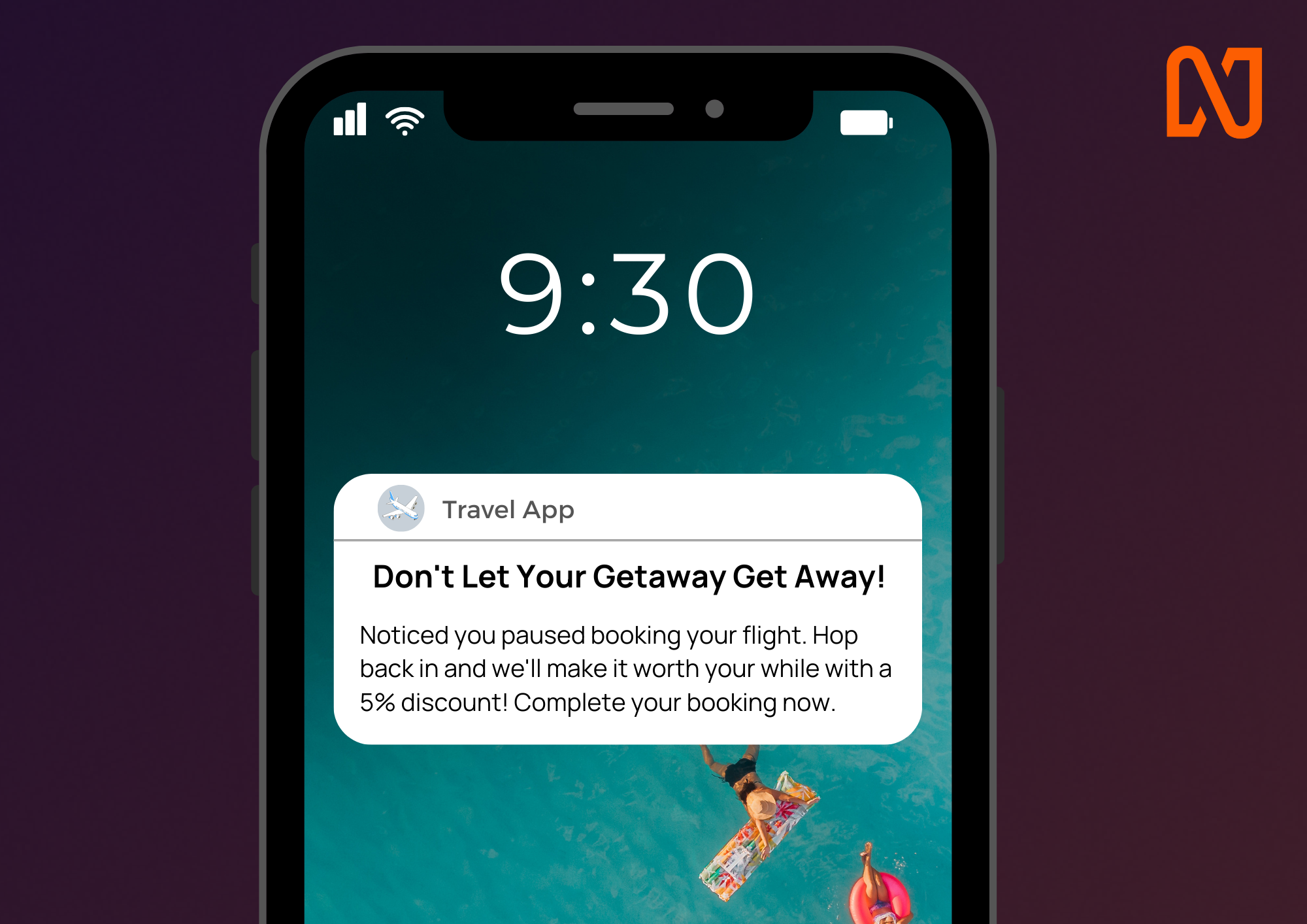
d. Be a personal assistant
To further elevate your customers’ experience, consider engaging them with actionable push notifications. For example, send reminders to pack their favorite perfume, sunscreen, or other accessories for the journey.
These push notifications are designed to improve brand awareness and act as an assistant to show that you care for your customers as a brand. This creates a lasting impact in their minds and aids in brand recall.
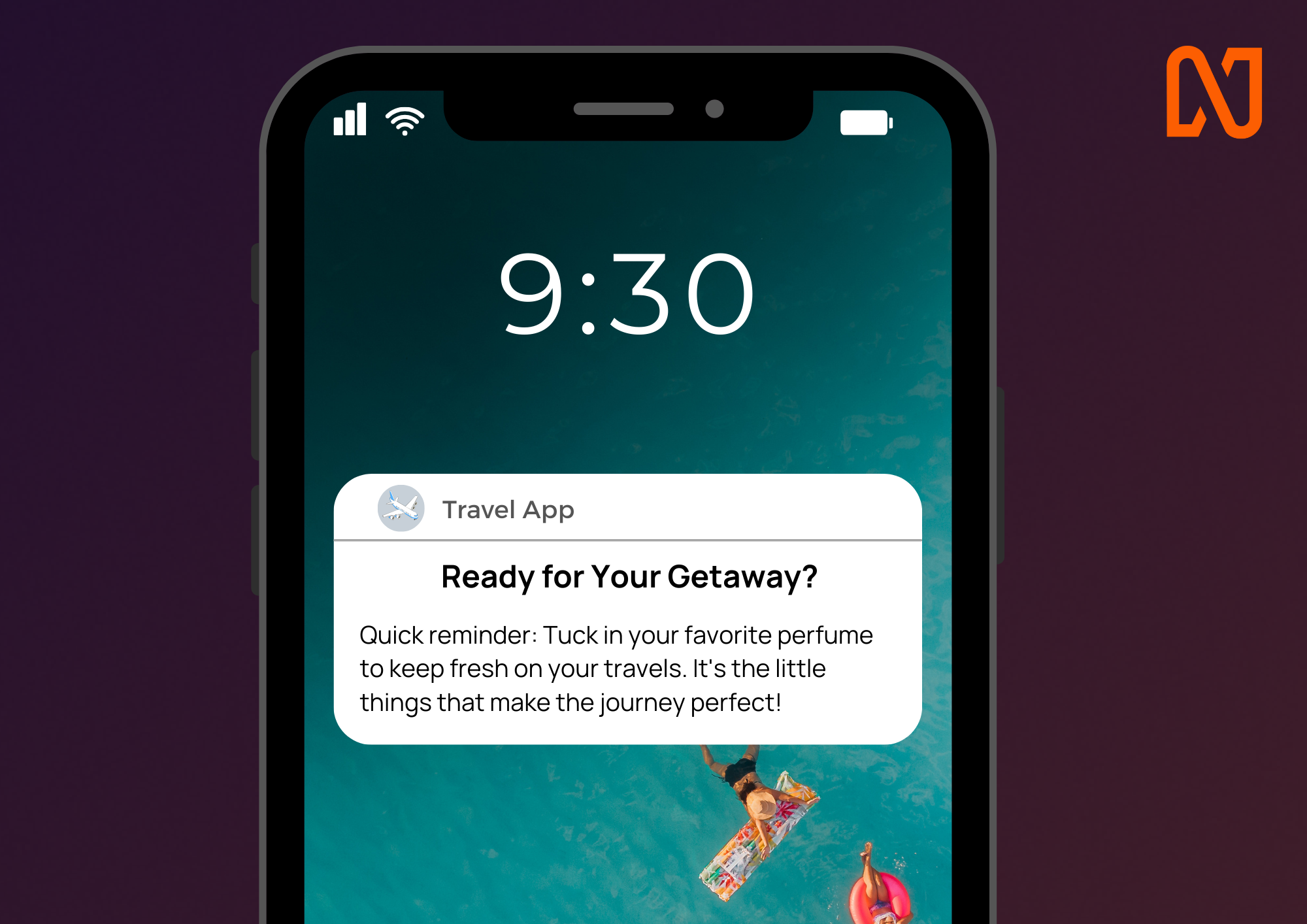
Post-Booking Campaigns
a. Re-engage dormant users
Users often interact with a travel app for a specific trip and then disappear. To re-engage them, consider sending a strategically timed notification suggesting a new destination for their next adventure. Additionally, you could inspire their next journey by sharing a photo gallery of stunning beaches, enticing them to start planning anew.
Alternatively, re-engage your users by offering a hotel discount or alerting them about expiring loyalty points or rewards. The goal is to remind them of your app’s presence and value, encouraging them to return and interact.
b. Get feedback after every interaction
Seeking user feedback is a pivotal aspect of the customer experience, demonstrating your value for their opinions. This engagement not only garners valuable insights into what customers expect but also directs enhancements for your app or website to improve the overall user experience.
Additionally, it helps build a community around your brand, encourages user loyalty, and identifies any potential issues early. Implementing this feedback can lead to significant product improvements, ultimately driving customer satisfaction and retention.
Feedback can be collected through various methods, such as NPS surveys, ratings, or open-ended messages. Pandooin, an Indonesian travel management company, utilized NPS surveys post-purchase to gauge customer satisfaction and experimented with different web page layouts to maximize survey responses. This strategy not only provided insights into the customer experience but also helped optimize the effectiveness of their feedback collection efforts.
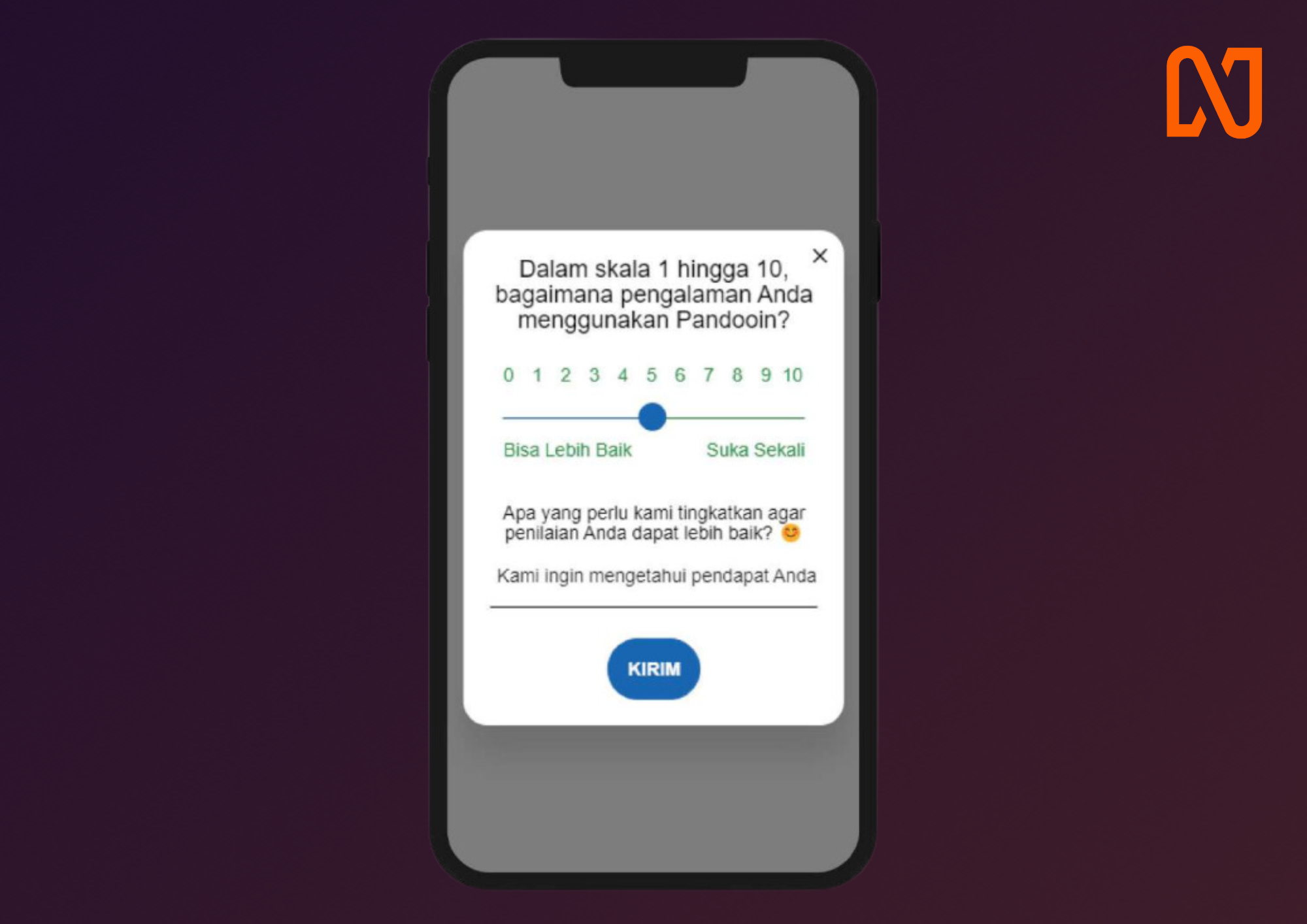
Pandooin NPS Survey Example
Learn how Pandooin achieved 27% uplift in user conversions using Netcore’s No-code customer engagement platform.
5 Best Practices to Follow While Sending Push Notifications
Sending high-quality push notifications involves striking the perfect balance between informative and engaging content without being invasive. For marketers looking to refine their skills, mastering effective push notifications can significantly enhance clicks, engagement, retention, and conversions.
Here are some key pointers to keep in mind:
1. Clear and Concise Messaging
Craft your push notifications to be brief yet compelling. Utilize persuasive language and include a distinct call to action (CTA) that prompts users to take specific steps. A well-crafted CTA enhances click-through rates by clarifying and engaging the desired action.
2. Personalization for Customers
Employ a customer engagement platform to customize your push notifications according to user preferences, behaviors, and demographics. Addressing users by name and aligning content with their interests can significantly heighten engagement, making each notification feel personally tailored and more impactful.
3. Optimal Timing and Frequency
Utilize a customer engagement platform to analyze user behavior and identify the most effective times for sending push notifications. It’s crucial to avoid overwhelming users with excessive notifications.
Consider setting frequency caps or employing smart delivery algorithms to maintain the effectiveness of your notifications without being intrusive. This strategy ensures user satisfaction and engagement by providing timely communications without overburdening them.
4. Incorporate Rich Media
Enhance your push notifications by including rich media such as images, GIFs, or videos. This visual appeal captures attention and encourages users to take action, helping your messages stand out. Adding vibrant content not only makes the notifications more engaging but also introduces a fun element that can significantly boost user engagement.
5. Deep Link Your CTAs
Embed deep links in your push notifications to direct users to specific pages or sections within your app, streamlining their experience and minimizing friction. This method effectively redirects users to where they need to go, making your app more intuitive and user-friendly.
Conclusion
Push notifications act as your secret weapon, a VIP pass to enhance customer engagement. They serve as a beacon guiding your customers toward your brand amid a sea of competitors.
Yet, simply deploying push notifications isn’t enough. Success depends on how creatively you utilize this potent tool. Carefully crafted with the right timing, personalization, and relevance, push notifications can significantly strengthen your brand’s relationships with customers, offering engaging interactions instead of intrusive disruptions.
Ultimately, it’s about ensuring your brand becomes a trusted companion in your customer’s journey rather than just another forgettable stop along the way.









